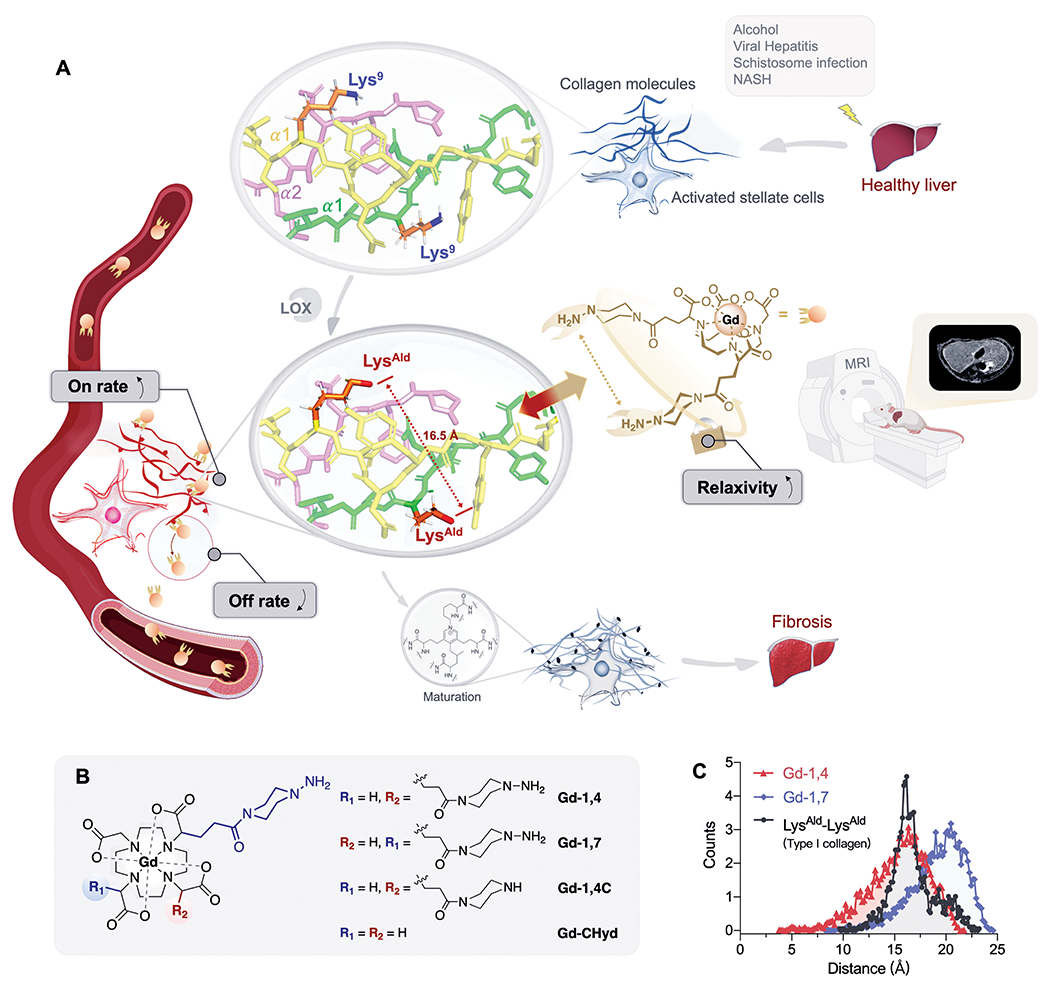Fig. 1. Probe design.

(A) Schematic illustration of the development of dual LysAld binding MRI probe for non-invasive detecting liver fibrogenesis. Chronic liver injury leads to the activation of stellate cells. In the remodeling of the extracellular matrix, closely separated Lys pairs on α1 chains of collagen telopeptide are oxidized by LOX to LysAld. The dual hydrazine Gd3+ probe precisely targets these LysAld pairs with high binding on-rate, high relaxivity upon binding and low off-rate, and results in increased dynamic range and noninvasive detection by MRI. (B) Chemical structures of Gd3+ complexes synthesized and studied in this work. (C) End-to-end distance distribution obtained from molecular dynamics simulation of the O-O distance between two α1–N9–LysAld residues in type-I collagen and the N-N distance in piperazino-hydrazine groups in Gd-1,4 and Gd-1,7.
